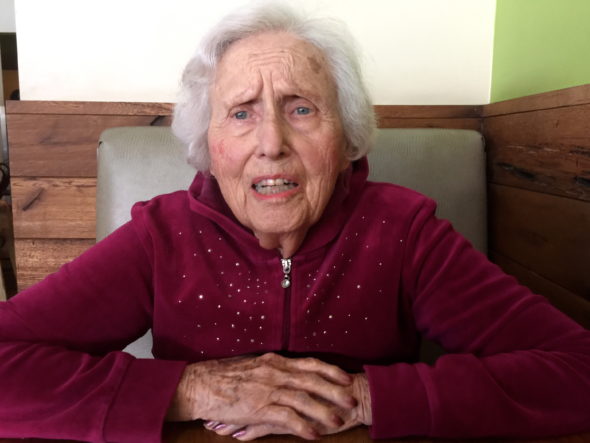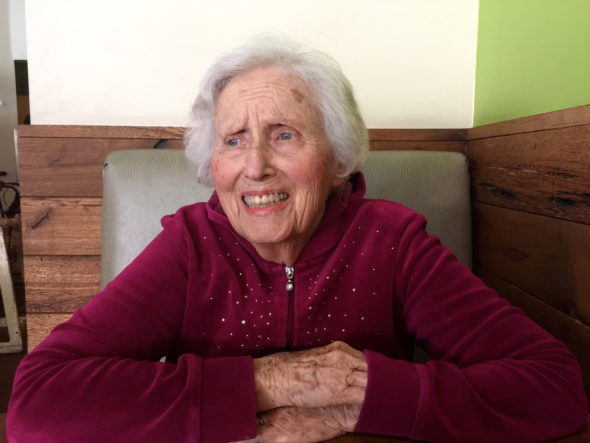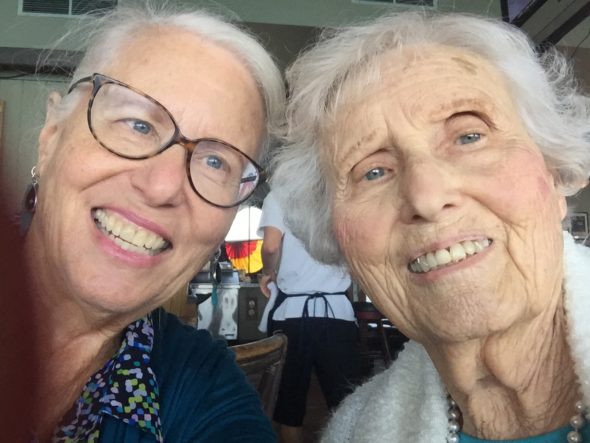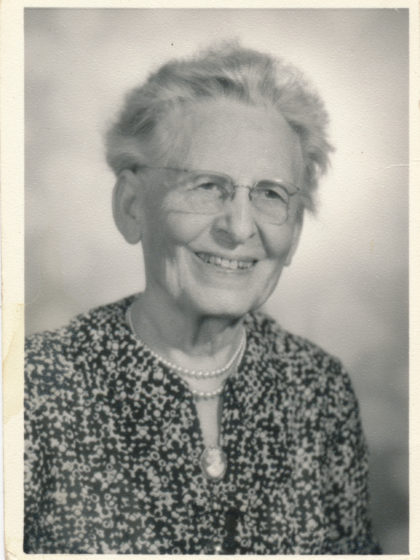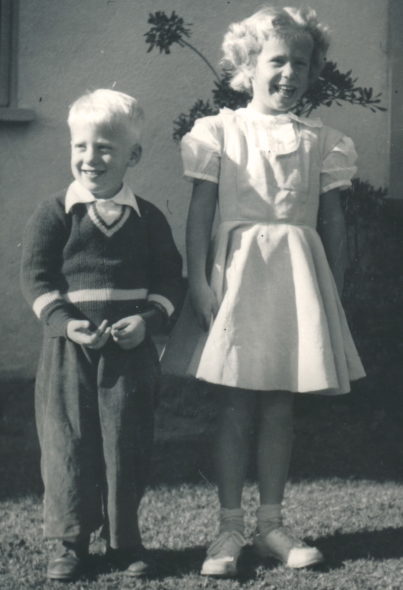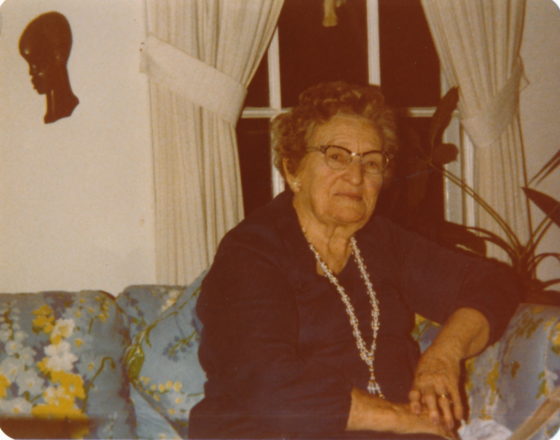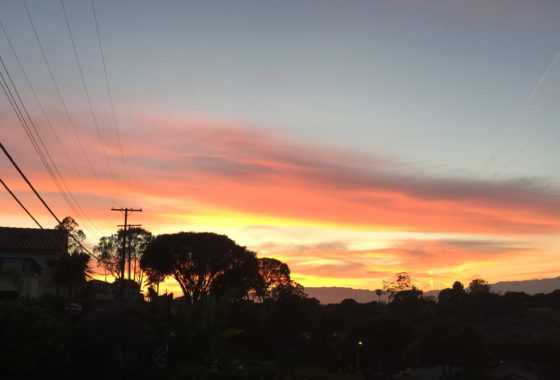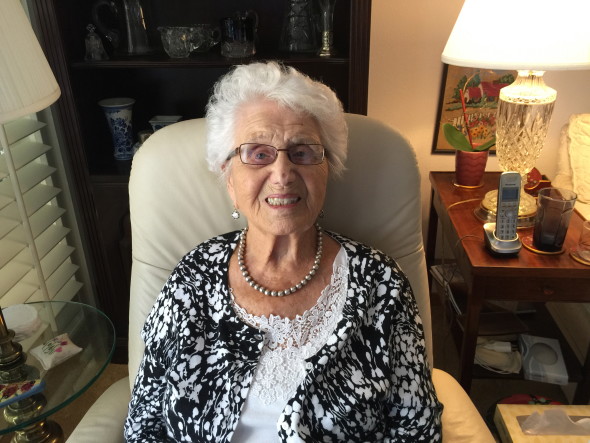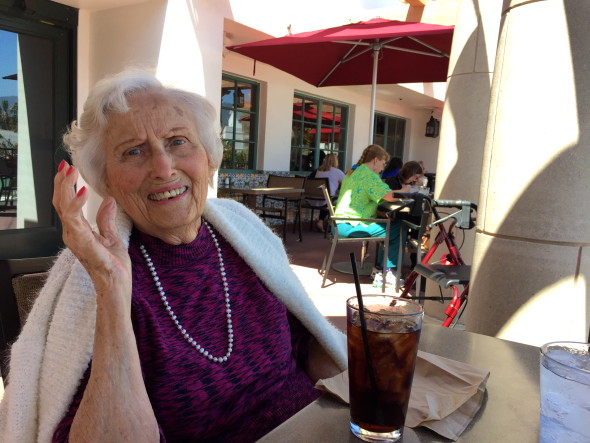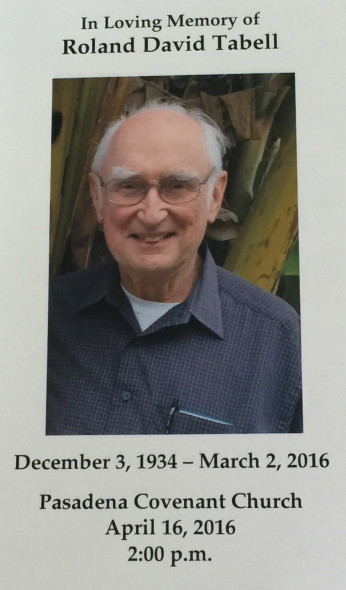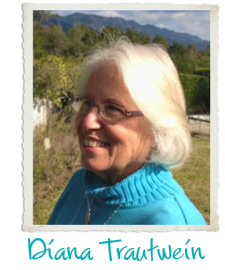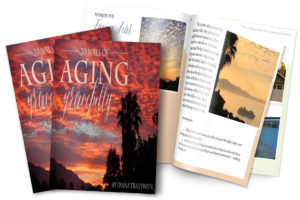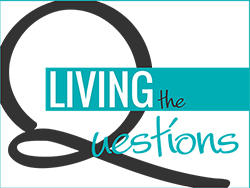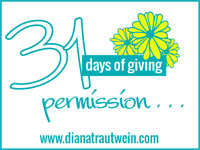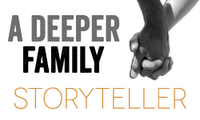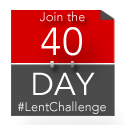Yes, this is the very photo from which the button for this series was created. At that same University arboretum where we discovered the buckeye butterfly posted yesterday, we also enjoyed wandering through a long and winding World Gardens pathway. And our eyes were drawn immediately to a wide variety of these strange and wonderful flowering shrubs called protea.
Protea are native to South Africa but are showing up more and more in southern California landscapes. The conditions between the two climates are remarkably similar. How do I know that? Because many years ago, my husband and I spent a tiny bit of time in South Africa on our way up to our home-for-two-years-as-newlyweds in Choma, Zambia. Surprisingly, these plants also seem to thrive on the sloping hills of Haleakala on the island of Maui in the Hawaiian archipelago, a much more tropical and humid environment. They are hardy, unusual and quite beautiful, in their own unique way. The one above was the first fully open bloom on a huge bush full of buds. The bush was at least two feet taller than I was, so the display must be spectacular right about now.
This smaller, lower to the ground variety is similar to ones sold in grocery store flower markets and is commonly called a pincushion protea. Can you see why?
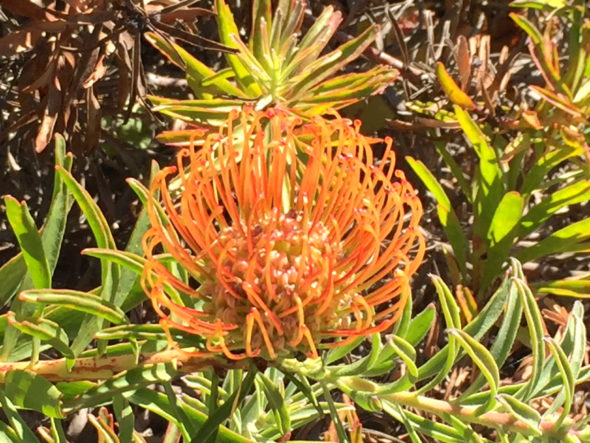
And this one, I’ve never seen before. It looks for all the world like a particularly capacious ear of corn, doesn’t it? This bush was also quite large — more like a small tree — and was covered in these interesting, bright yellow blooms.
Paying attention to protea helps me to remember that God delights in variety. It also reminds me that what might at first seem strange and peculiar to my untrained eye might be a source of refreshment and appreciation to someone who has grown up with these prolific flowering shrubs. Sometimes, it’s what you’re used to, isn’t it? And it’s really, really good for me to see things I am not used to. To try out new ideas, meet new people, consider a perspective different than my own. What about you?
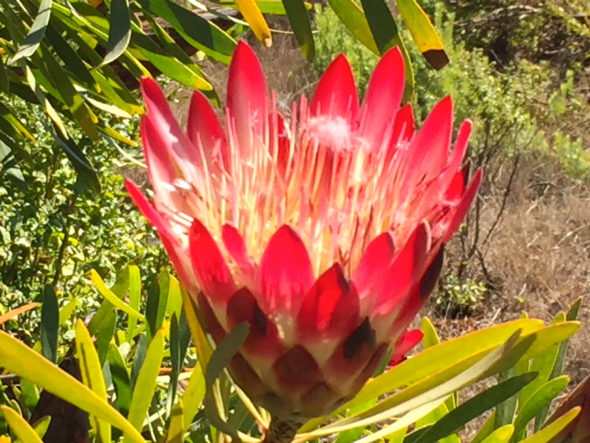
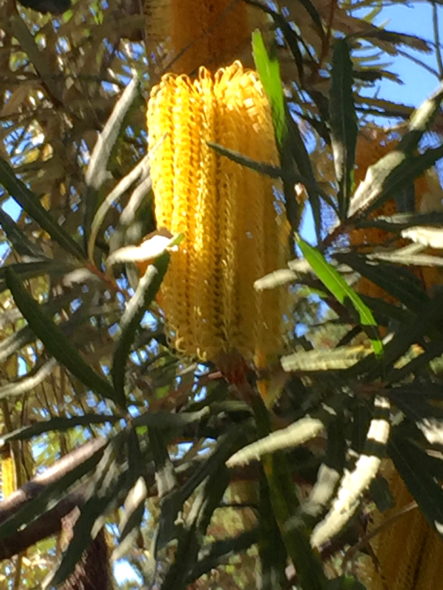
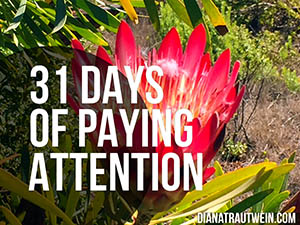


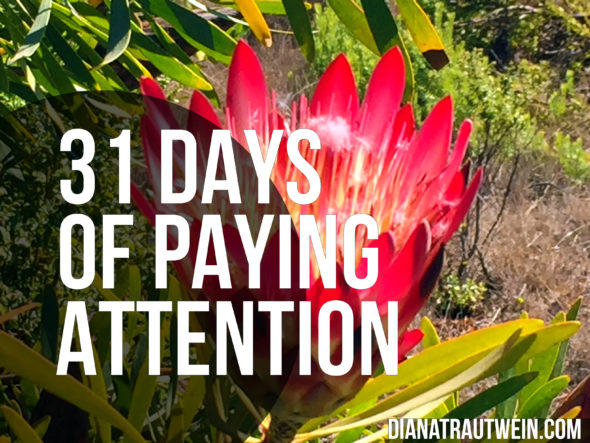

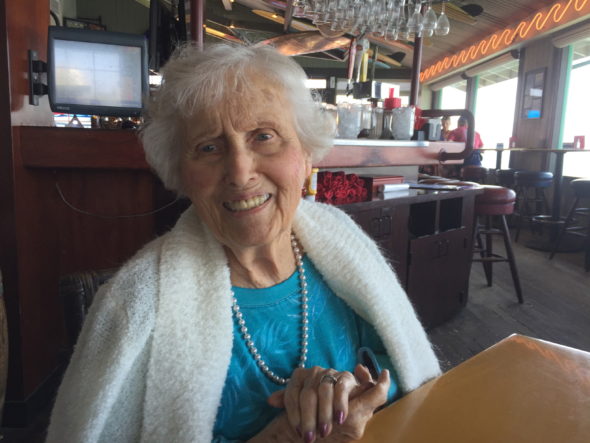 You know, it’s just lunch. Simple, right? I get in the car, I drive over to Mom’s care facility, I punch in the magic code to open the door, I gather her up, confused and beautiful as she is, I open the door so we can both go out into the sunshine.
You know, it’s just lunch. Simple, right? I get in the car, I drive over to Mom’s care facility, I punch in the magic code to open the door, I gather her up, confused and beautiful as she is, I open the door so we can both go out into the sunshine.